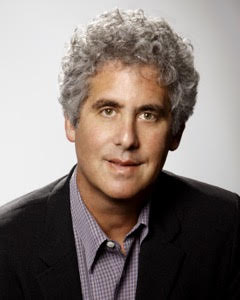How Local Law Enforcement Uses Community Policing to Combat Terrorism
Editor’s Note: Terrorism is a global problem, but it is also a local one. Individual terrorists, particularly lone wolves, are often linked to their communities in terms of their resentments, ambitions, and targets. Not surprisingly, making local communities comfortable with law enforcement is a vital part of counterterrorism. Programs to encourage this, however, are often underdeveloped and under-researched.
Published by The Lawfare Institute
in Cooperation With

Editor’s Note: Terrorism is a global problem, but it is also a local one. Individual terrorists, particularly lone wolves, are often linked to their communities in terms of their resentments, ambitions, and targets. Not surprisingly, making local communities comfortable with law enforcement is a vital part of counterterrorism. Programs to encourage this, however, are often underdeveloped and under-researched. Steve Weine of the University of Illinois lays out best practices for community policing and offers suggestions for how to think about this vital counterterrorism component.
***
Officer Jim Buck of the Los Angeles Police Department (LAPD) dresses like a cop but doesn’t behave like one. As a community outreach officer he uses community policing strategies to fight terrorism, as was called for by the White House strategy for preventing violent extremism in the homeland.
When I met Officer Buck in the course of my research, he described his approach like this:
A good community outreach officer needs to let go of that stereotypical cop persona and take a knee. Literally, drop on one knee and meet their 5-year-old son or daughter eye to eye. Take your shiny badge off of your chest and let the kid hold it. Pretend you’re putting handcuffs on him for a staged photo op. Give the 5-year-old your baton and let him swing it. Then notice a crowd forming with their iPhones; ready to capture that moment in time of the sharply dressed uniformed cop playing, teasing and joking with their little sons and daughters and breaking down barriers that community members harbor.
The LAPD’s work is far more than officers like Buck hamming it up for photo ops. Under the leadership of Deputy Chief Michael Downing, community policing forms partnerships between law enforcement and the communities they police. These techniques emphasize proactive joint problem solving to build trust and cooperation and address the conditions that diminish public safety.
Nearly one half of policing agencies in the United States are using the community policing practices of outreach and engagement to communities being targeted for recruitment to terrorism, according to a recent national study led by Duke University’s David Schanzer.
Adopting a community policing model is a necessary reform to better protect and serve communities at risk for radicalization. Many of those communities are comprised of immigrants and refugees from countries where the police were feared and citizens learned to turn away. Community policing can humanize officers for these communities and help shift these prejudices. However, we will need research to actually prove that community policing is fulfilling its potential.
The LAPD and its law-enforcement and community partners believe that community policing is not just a feel-good activity but can strengthen community resilience to violent extremism. Our research of their work has identified five practices that could serve this purpose:
Engage. Community outreach officers meet and establish one-on-one relationships with community leaders that open communication channels. They also build partnerships with community-based organizations, including faith-based and interfaith organizations.
Build Trust. Community outreach officers work to establish honest and open dialogue on sensitive issues—including terrorism, hate crimes, and discrimination—with community leaders and members. They acknowledge and promote mutual understanding of communities’ historical traumas and their present needs and strengths. Law enforcement aims to be as transparent as possible regarding crime fighting and police conduct.
Educate. Community outreach officers teach communities about crime (including hate crimes), police work, and community resources to combat criminal activity. This includes building knowledge and awareness in communities about violent extremism and how to prevent it.
Problem Solve. Community outreach officers help communities and individuals respond to their current problems. This includes helping communities respond appropriately to Islamophobia, discrimination, and hate speech and crimes. They also help community members access available resources to address social, legal, and mental and physical health concerns. They assist immigrants and refugees in promoting their integration and addressing their security concerns. They provide communities with knowledge and skills to assess the threat level of individuals and educate them on how to respond.
Mobilize. Community outreach officers promote the civic engagement of community members, including promoting women and youth advocacy on civic and public safety issues. They also provide community-based organizations with consultation, materials, information, and support regarding how their organization can contribute to building resilience to violent extremism.
These should all be considered emerging practices, given that this is still a new strategy and further research is needed to prove their effectiveness.
In the meantime, efforts are needed to train more police officers in other U.S. localities to be like Officer Buck and put in use these emerging community policing practices. According to Schanzer, less than one quarter of all U.S. agencies have trained their officers in how to engage with Muslim-American communities that have been targeted for terrorist recruitment.
Establishing community policing programs to address violent extremism face several kinds of barriers. First, some community members may not adequately trust or want to work with law enforcement. This can be due to prior negative experiences with law enforcement here or in other countries, or to opposition to CVE because of the perception that it singles out Muslim-Americans or is a means of surveillance. Second, police departments may not have adequate resources to support the training, manpower, and special activities of community policing, especially in the face of competing fiscal demands. Third, because terrorist attacks and threats receive more media coverage than prevention, and forceful counterterrorism tactics receive far more Congressional support, it is difficult to muster the necessary federal resources to support community policing and CVE activities.
The aforementioned emerging practices lay a necessary foundation for combatting terrorism in the homeland, but additional work is needed in order to effectively build community resilience to violent extremism. This additional work could start by considering several priority recommendations that came from community outreach officers and their community partners:
Focus on all threats. Instead of limiting the focus to Muslim-Americans, use community policing strategies to address the full spectrum of ideologically inspired violence, including the violent far-right and far-left, as well as non-ideologically inspired violence.
Keep community policing activities separate from surveillance and investigations. Despite some calls for using community policing as a means of information gathering, many people spoke of the need to maintain several degrees of separation from the other dimensions of police work.
Broaden the strategies for building community resilience. Police should expand beyond criminal justice models and build the capacity of communities to address the potential root causes of terrorism, such as a lack of support and opportunities for youth, using public health prevention models and targeted violence-prevention strategies based on mental health models. For example, the Los Angeles County Department of Mental Health runs a School Threat Assessment and Response Team that works with schools and communities to conduct assessments and intervene with students who are believed to pose a threat.
Officer Buck spoke to how community policing contributes to combating terrorism through enlisting the resources and strengths of communities to help the police, building upon law enforcement’s own finite resources:
The community always knows when an individual officer or the department does something helpful for them. They typically do not forget a helpful act or a heartfelt letter because it’s important to them and their families. Keep earning credits within the community and its leaders. There will come a rainy day!
The truth is that we don’t yet have the research evidence to prove that community policing is effective in combatting terrorism as Buck suggests; for example, there are insufficient data to demonstrate an increase in tips. Based on prior research studies of community policing in other situations, we might expect that it would improve citizens’ satisfaction with and trust in the police, and not much more.
Determining whether and how the identified practices may be related to key outcomes of terrorism will require independent and rigorous program evaluations. If community policing is to remain a core component of combating terrorism, then federal, state, and local agencies should prioritize conducting these evaluations so as to establish evidence-based practices.





